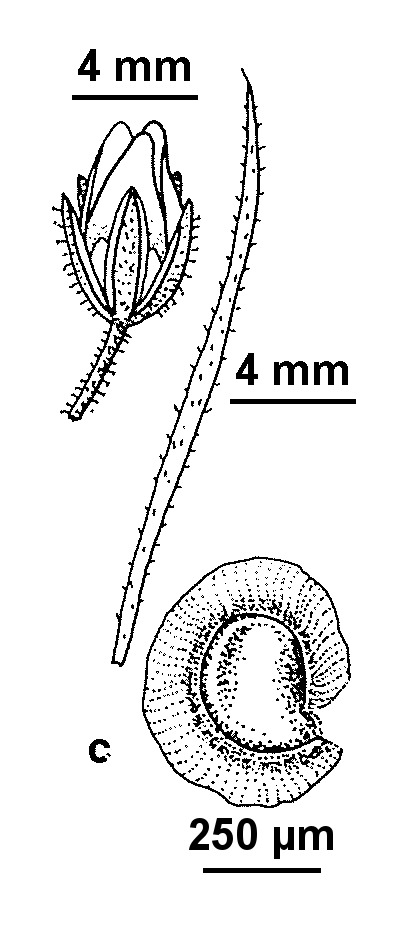Spergularia villosa
(Pers.) Cambess.Perennial; rootstock more or less woody; stems robust, spreading to erect, 10–35 cm long, glabrous below, glandular-hairy above; internodes 5–10(–15) mm long. Leaves linear-filiform, prominently awned, densely fasciculate, 10–25 mm long, 0.4–0.8 mm wide; upper leaves glandular-hairy; stipules lanceolate, long-acuminate, (4–)6–8 mm long, shortly connate, more or less silvery. Inflorescence many-flowered but lax; pedicels reflexed in fruit, c. twice length of sepals, densely glandular-hairy. Flowers 8–10 mm diam.; sepals 4–4.5 mm long, green, with dense glandular hairs 0.15–0.25(–0.4) mm long, margins narrowly membranous; petals shorter than sepals, white; stamens (3–)8–10. Capsules narrow-ovoid, to 6 mm long, much longer than sepals; seeds 0.4–0.6 mm long, smooth or obscurely tuberculate, red-brown, scariously winged or occasionally unwinged (or wing vestigial), the wing margin more or less minutely erose-dentate. Flowers Oct.–Nov.
Wim, VRiv, Gold, CVU, NIS. Also SA (naturalised). Scattered in central and northern Victoria (e.g. Bendigo area, Glenrowan, St Arnaud, Puck-apunyal), sometimes a weed in pastures.
Specimens in Victoria are much more robust than those from Chile, as outlined by Rossbach (1940).
 Spinning
Spinning
